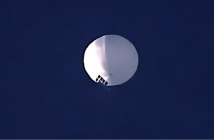The Trump Administration’s 2020 Budget Request Could Be, But OCO, F-15X, Carrier, Amphib, Space Force Raise Doubts
When it comes to budgets, it’s sometimes hard to tell the whole by the sum of its parts.
It’s possible the Trump administration’s 2020 budget request to Congress later this month will be the masterpiece that acting Defense Secretary Pat Shanahan has claimed it would be.
For two years, the administration has said the coming budget request would be the culmination of efforts to align defense spending with the administration’s new strategy to better position the nation for great power competition with a rising China and revanchist Russia.
That may be the case, but from what’s been revealed so far on key Air Force and Navy programs, there are reasons for concern.
For starters, the administration plans to skirt the 2011 Budget Control Act spending caps by boosting overseas contingency operations funding to $150 billion to increase defense by 5 percent while cutting non-defense government spending by 5 percent.
It’s an idea that’s dead on arrival for two reasons.
First, the move would constitute President Trump’s second attempt to circumvent Congress’ constitutional control over the nation’s purse.
Trump last month declared a baseless national emergency build his border wall by redirecting appropriated, but un-obligated, government funds to build the wall, including $3.5 billion from the Pentagon’s military construction account.
The House voted to block the measure on constitutional grounds and the Republican-controlled Senate is expected to follow suit. It remains unclear if the margin will be veto proof.
Second, Democrats will not accept an increase in defense spending without a concomitant rise in non-defense government spending.
The upcoming battle over the nature of the funding is likely to cloud other controversial but thoughtful decisions embedded across the budget proposal.
The leading acquisition issue being discussed at the Air Warfare Symposium in Orlando last week was whether the service would acquire up to 80 new Boeing F-15X fighters.
The prospect of new jets to replace aging F-15C fighters was discordant given service leaders have spent two decades arguing against more “new old airplanes,” instead seeking to build an all 5th generation fighter and bomber force.
More worrisome, Air Force Secretary Heather Wilson and Gen. David Goldfein, the service’s chief, said the proposal wasn’t their idea, but would put the planes to good use.
Their candor is appreciated, but begs the question — who’s pushing the idea? Clearly, Boeing has long lobbied for the deal to prolong its signature St. Louis production line.
Was the catalyst Congress, Acting Secretary Shanahan — a senior Boeing executive before joining the administration — the White House? Boeing masterfully won over president elect Trump by publicly appearing to cut Air Force One’s pricetag. Lockheed, in contrast, irritated Trump who repeatedly blasted the company’s F-35 Lightning II, calling for more Boeing F-18s instead.
There nothing in Washington that’s the product of immaculate conception. Some one came up with it. The question is who and why.
Supporters maintain more new F-15s would allow C-model jets in the Air Guard and USAFE to retire while ensuring Boeing remains in the fighter business to put pressure on Lockheed Martin that would otherwise have a run of the US tactical combat aircraft business.
That rationale is shaky. St. Louis has plenty of business, building F-15s for export as well as Navy F-18. And it last year won contracts for the Air Force’s T-X trainer and the Navy’s MQ-25 unmanned tanker.
It’s disingenuous to say, as Air Force leaders have suggested, that if they buy Eagles it would not impact other programs. There’s not such thing as free money. The question what higher priorities would benefit from $700 million or more a year, like developing an F-22 Raptor successor or more F-35s.
Over at the Navy, the upcoming budget request will propose retiring the USS Harry S. Truman after only two decades of service and canceling construction of two San Antonio-class amphibious ships. (Full disclosure, the maker of those ships, Huntington Ingalls Industries, is among our sponsors.)
Skipping the refueling of Truman’s two giant reactors would save about $5.5 billion over five years or so, but retire a ship 30 years before the end of its 50-year design life. One source said the decision is part of a broader plan to speed retirement of the Nimitz-class to more quickly introduce the Ford-class that is more capable and manned by fewer sailors.
But nuclear-powered aircraft carriers are designed and built with a 50-year service life. The Navy has only accelerated retirement of ships that have become outmoded, as with the Essex-class that helped win World War II but were outmoded as jet aircraft became ever larger and heavier. Those ships served for about 30 years before being scrapped or turned into museums.
Yes, the each Ford-class ships will be manned by 600 fewer sailors than a Nimitz-class ship, reducing steady state run costs. Although more capable, the new ships are also expensive, with the lead ship coming in at more than $16 billion and future ships — thanks in part to a block-buy approach — will cost about $12 billion apiece.
To retire a nuclear-powered carrier able to serve for another three decades demands the Navy present compelling and verifiable data to support its case, rather than a budget stunt masquerading as a strategic move. Remember when the Navy sought to skip a refueling for USS Abraham Lincoln and retire her, a proposal rejected by Congress.
As for its amphibious force, the Navy will propose cancelling two San Antonio-class amphibious ships, arguing they would be vulnerable in potential future operations and that the money would be better spent on submarines and surface warships more able to survive in a contested environment.
The Navy deserves credit for having assessed the vulnerability of its forces. And there’s clearly a case to be made that investing in America’s undersea warfare capabilities that constitute an asymmetric advantage makes sense. But making such a private conclusion is radically different than publicly admitting that the capabilities of a potential adversary are formidable enough to prompt the cancellation of major surface warship orders.
Each element of naval power has its role. Yes, the entire fleet is becoming more vulnerable, particularly surface forces, but that’s been the case for some time. The question is what the Navy is doing to ensure that it can operate its ships when and where they are needed.
On this score, it’s hard to give the Navy good grades. It had watched the threat grow and done too little to respond. China has fielded several weapons tailored to pushing US forces as far from its shores as possible by holding fixed bases as well as moving ships at risk.
In response, the Navy needs better defenses as well as offensive systems. While it is bolstering its stockpiles of air and missile defense missiles, it’s still on the wrong side of the cost curve. China is imposing greater cost on the Navy than the other way around.
Despite this shifting dynamic, the Navy has remained disturbingly overconfident, steadfastly refusing to outfit its big-deck carriers with the long-range air power they need to remain relevant in a potential future conflict. Investment in defending these first-rate ships of the line also remain worryingly spotty.
True, carriers can move quickly, over sustained periods and maneuver with impressive agility for their size. But if they are vulnerable and lack an ability to reach out and touch targets at range, then they may not be worth the cost — whether they have 600 fewer sailors aboard them or not.
At the moment, America’s carriers are too big, too expensive and too capable for the kind of low-end conflicts they’ve been engaged in, but ill-suited for a major war against peer competitor that has spent decades studying how best to hold them at bay or incapacitate them.
Finally, the budget will contain details about the administration’s nonsensical drive to establish a new space force, an unnecessary move that will merely introduce more bureaucracy and infighting to the Pentagon.
Critics charge that a new independent space force is needed because the Air Force has dropped the space ball, underinvested in capability and mismanaged its space operations and acquisition workforce. As a result, they claim, China and Russia have improved their capabilities and now threaten American space supremacy.
It’s true that Moscow and Beijing have stepped up their space game, but it’s wrong to suggest that the Air Force hasn’t been paying attention.
The US Air Force focused on space even before it became an independent service, methodically working over decades to become the world’s most capable space power.
The 2011 Budget Control Act forced the service to make tough choices, including regarding its space portfolio. That said, the Obama administration worked hard to ensure that despite budget cuts, space investment was increased. Over the past decade the space business itself has undergone a revolution, shifting from a government-dominated field to one that is more commercialized than ever.
Thanks to ever smaller and better sensor and communication technologies, spacecraft have shrunk in size and cost to the point that a small launch vehicle can loft a large number of satellites into orbit at prices cheap enough for high schools to afford.
As is often the case when revolutionary change is underway, successful organizations are forced to confront whether to keep doing what they have been doing which despite high cost was successful, or shift gears.
Air Force as hesitant to leap from what it knew — large satellites send into space by highly expensive but extremely reliable boosters — to an emerging, innovative but untested new commercial space sector.
It’s worth remembering that at the time, SpaceX was the only other commercial provider of boosters large enough for Air Force missions but it had a track record of failure.
Yes, America’s adversaries are stepping up their game as space will become an ever more militarily contested environment that may see the introduction of kinetic systems. The answer to this threat isn’t to create a separate service. The administration is right to bring back the US Space Command, which in the wake of 9/11 was folded in 2003 to create the Northern Command.
Interestingly, as America seeks to break apart its air and space forces, Russia and China are working to more closely integrate their air and space capabilities. Moscow in 2015 renamed its air force the Russian Aerospace Force to underscore its union of air and space power.
If you are going to go through the disruption and pain to create a space force, then it should be done right by including in it all the elements it needs for success. That means including the National Reconnaissance Office in the new organization, a key driver of US space requirements.
Why is the White House so zealous about this idea?
The answer, according to sources, is that former House Speaker Newt Gingrich convinced Trump of the need for a new space force to defend future US mining bases on the moon.
Who, exactly, the new US space force be defending future American moon bases from is unclear. There is little on the moon that is valuable enough to justify the cost of mining there and returning it to the earth. If there is enough water on the moon, that may be valuable to produce rocket fuel up there for missions to Mars and beyond. That science fiction future is a long way off and not reason enough to justify a space force.
Supporters maintain that whatever Trump’s reasoning, the decision is the right one because the Air Force has so systemically mismanaged the space portfolio.
They’re wrong. The right answer is reestablish the US Space Command and rename the US Air Force the US Aerospace Force — as proposed decades ago by then Air Force chief, Gen. Ron Fogleman.
But even if a space force is created, each of the services will have to maintain their own organic capabilities, similar in some respects to how they regard aviation.
Despite the creation of an independent Air Force, each service maintains its own tactical air force — some larger than several foreign air forces combined — to address service-specific needs.
Of the four, only the US Air Force is able to deliver industrial scale air and space power efficiently over sustained periods of time. The same will be the case with the space force.
Two other key questions loom. First, whether those who chose to serve in the Army, Navy, Marines or Air Force will be eager to be transferred to the new service. Some have made it clear that they do not. Second, the last time an independent military service was established it was born of admiration for its accomplishments and sacrifice in helping win a world war. It was self evident to all that the nation needed an independent service focused on developing and projecting air power. Today, the need for a space force is hotly debated and the brunt of belittling jokes. Not an auspicious start.
In about a week, we will know more about what’s in the administration’s budget and can judge whether the underlying analysis on which decisions were based are well founded.
But at first blush, the drive to fund defense increases through a $150 billion OCO, buying more F-15s, retiring a carrier and the space force are all bad ideas that Congress must stop.
As throughout America’s history, it’s been up to the administration to propose, but up to Congress to dispose and act on a check over ideas that will cause more harm than good.




